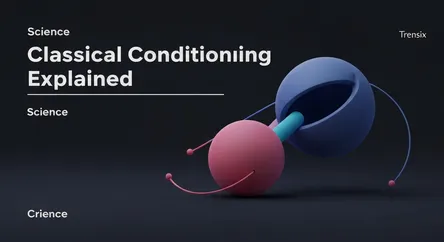Science
Classical Conditioning Explained

Discover how associative learning works. Learn about classical conditioning, Pavlov's famous experiments, and its impact on everyday behavior.
What is it?
Classical conditioning is a type of learning where a neutral stimulus comes to elicit a response after being paired with a stimulus that naturally elicits that response. First described by Russian physiologist Ivan Pavlov, this concept is famously illustrated by his experiments with dogs. Pavlov noticed that dogs would salivate (unconditioned response) at the sight of food (unconditioned stimulus). He then began ringing a bell (neutral stimulus) just before presenting the food. After several pairings, the dogs began to salivate at the sound of the bell alone. The bell had become a conditioned stimulus, and the salivation in response to it became a conditioned response.
Why is it trending?
The concept of classical conditioning remains a cornerstone of behavioral psychology and frequently resurfaces in discussions about marketing, self-help, and animal training. People are fascinated by how subconscious associations shape their habits, preferences, and fears. Its principles are actively used in advertising to create positive associations with brands and in therapies designed to treat phobias and anxiety disorders, making it a perennially relevant topic for understanding human and animal behavior.
How does it affect people?
Classical conditioning profoundly affects daily life, often without our awareness. It can explain why a particular song might make you feel happy or sad by reminding you of a past event, or why the smell of a certain food can make you feel hungry. It's the foundation for many phobias, where a neutral object becomes associated with a terrifying event. In contrast, it's also used therapeutically in techniques like systematic desensitization to help people unlearn fear responses. Advertisers also leverage it by pairing their products with appealing imagery to create a desirable association in the consumer's mind.